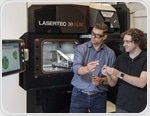
|
|
|
| |

|
|
| |
The latest artificial intelligence news from AZoAI and across AZoNetwork |
|
|
|
 | | |  Reddit Moderators Grapple with Rise of AI-Generated Content Reddit Moderators Grapple with Rise of AI-Generated Content Cornell researchers found that Reddit moderators are increasingly worried that AI-generated content is eroding authenticity, trust, and human connection across communities. Their study reveals moderators’ efforts to set and enforce rules to preserve Reddit’s “human” culture amid the rise of AI tools. | | | | |  Why AI Still Can’t Fool Us: Study Reveals How Chatbots Miss Human Conversation Cues Why AI Still Can’t Fool Us: Study Reveals How Chatbots Miss Human Conversation Cues A new study comparing real human phone conversations with AI-generated dialogues shows that today’s large language models still struggle to convincingly mimic natural human speech. Despite rapid progress, AI reveals itself through exaggerated imitation, poor use of social cues, and awkward openings and closings that humans easily detect. | |
|
|
| |  | | |  In a recent article published in the journal Engineering, researchers presented a comprehensive review of the fast-growing field of intelligent photonics, highlighting its potential to significantly advance the integration of artificial intelligence (AI) with optical technologies. In a recent article published in the journal Engineering, researchers presented a comprehensive review of the fast-growing field of intelligent photonics, highlighting its potential to significantly advance the integration of artificial intelligence (AI) with optical technologies. | | | | |  The mobile Detection of Oral Cancer (mDOC) system leverages AI to improve early detection and referral accuracy for oral cancer in dental care settings. The mobile Detection of Oral Cancer (mDOC) system leverages AI to improve early detection and referral accuracy for oral cancer in dental care settings. | | | | |  Rowan University’s Digital Engineering Hub (DEHub) is pioneering the fusion of AI and advanced manufacturing, using a cutting-edge lab equipped with 3D metal printing and supercomputing capabilities to transform real-world production. By integrating intelligent systems with live data processing, DEHub enables real-time flaw detection and design optimization, laying the foundation for industrial-scale smart manufacturing. Rowan University’s Digital Engineering Hub (DEHub) is pioneering the fusion of AI and advanced manufacturing, using a cutting-edge lab equipped with 3D metal printing and supercomputing capabilities to transform real-world production. By integrating intelligent systems with live data processing, DEHub enables real-time flaw detection and design optimization, laying the foundation for industrial-scale smart manufacturing. | | | | |  Griffith University researchers developed a digital archaeology framework combining tactile experiments, VR, and machine learning to analyse ancient finger flutings—prehistoric markings made in cave moonmilk. Their models showed promising accuracy in identifying the sex of modern creators from tactile flutings, offering new scientific methods to understand who made some of humanity’s oldest art. Griffith University researchers developed a digital archaeology framework combining tactile experiments, VR, and machine learning to analyse ancient finger flutings—prehistoric markings made in cave moonmilk. Their models showed promising accuracy in identifying the sex of modern creators from tactile flutings, offering new scientific methods to understand who made some of humanity’s oldest art. | | | | |  Researchers have introduced an AI-driven, model-free control system that stabilizes the complex Uzawa-Lucas endogenous growth model using only partial economic data. By leveraging differential flatness and adaptive fuzzy logic, the method enables real-time economic policy steering without requiring full knowledge of underlying dynamics. Researchers have introduced an AI-driven, model-free control system that stabilizes the complex Uzawa-Lucas endogenous growth model using only partial economic data. By leveraging differential flatness and adaptive fuzzy logic, the method enables real-time economic policy steering without requiring full knowledge of underlying dynamics. | | | | |  X1 represents a leap in robotic mobility, integrating humanoid and drone functions for improved autonomy and adaptability in real-world applications. X1 represents a leap in robotic mobility, integrating humanoid and drone functions for improved autonomy and adaptability in real-world applications. | | | | |  Researchers developed a neural state-space model to predict plasma dynamics, optimizing rampdown trajectories and enhancing safety in tokamak fusion reactors. Researchers developed a neural state-space model to predict plasma dynamics, optimizing rampdown trajectories and enhancing safety in tokamak fusion reactors. | | | | |  The evolution of space robotics in 2025 is reshaping exploration and resource utilization, driving advancements in autonomous systems for future missions. The evolution of space robotics in 2025 is reshaping exploration and resource utilization, driving advancements in autonomous systems for future missions. | | | | |  In the hunt for new therapeutics for cancer and infectious diseases, lasso peptides prove to be a catch. In the hunt for new therapeutics for cancer and infectious diseases, lasso peptides prove to be a catch. | | | | |  The drug development pipeline is a costly and lengthy process. Identifying high-quality "hit" compounds-those with high potency, selectivity, and favorable metabolic properties-at the earliest stages is important for reducing cost and accelerating the path to clinical trials. The drug development pipeline is a costly and lengthy process. Identifying high-quality "hit" compounds-those with high potency, selectivity, and favorable metabolic properties-at the earliest stages is important for reducing cost and accelerating the path to clinical trials. | |
|
|
|
|
|
|
|